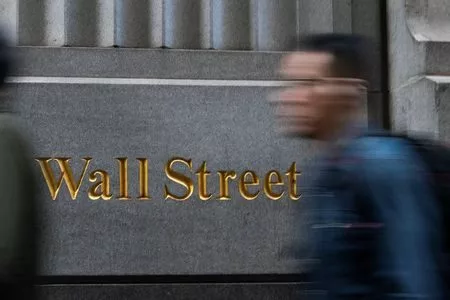By Davide Barbuscia
NEW YORK (Reuters) – The Trump administration’s pledge to contain long-term U.S. Treasury yields has strengthened bond market expectations that a long-desired regulatory shift on bank leverage requirements could be finally looming.
Some traders are betting regulators may soon focus on a review of the Supplementary Leverage Ratio (SLR), a rule requiring big U.S. banks to hold an extra layer of loss-absorbing capital against U.S. government debt and central bank deposits.
The possible policy change would mean banks would not need to set aside as much extra money when they hold safe assets like Treasuries.
This could eventually help push U.S. Treasury yields lower, some investors and analysts said, by giving banks more leeway to hold Treasuries and likely boosting demand.
The anticipation comes after U.S. Treasury Secretary Scott Bessent said last week that President Donald Trump’s administration was focused on containing 10-year Treasury yields, a building block of global financial markets and a benchmark for consumers’ borrowing costs.
The White House and the Treasury Department did not immediately respond to requests for comment.
Ryan O’Malley, head of portfolio management at Ducenta Squared Asset Management, said a potential review of the SLR would be positive for the Treasury market and other debt assets, which would benefit from banks freeing up their balance sheets.
“It will increase their demand for Treasuries and other assets. It will also probably strengthen banks’ credit profile,” he said.
The SLR was introduced as part of regulatory efforts following the 2008 global financial crisis. Over time, however, many Treasury market participants have come to see it as a major obstacle to banks providing liquidity to traders, particularly at times of heightened volatility.
The Bank Policy Institute (BPI), a trade association representing large U.S. banks, said in a recent paper that a recalibration of the ratio would be crucial to preserving market functioning, particularly given the prospect of rising government debt issuance due to large budget deficits.
“We think changes to the SLR could be made relatively quickly,” Francisco Covas, executive vice president and head of research at BPI, told Reuters in an interview.
The SLR should be near the top of the list of capital priorities for U.S. regulators, Covas added, referring to the Federal Reserve, the Office of the Comptroller of the Currency, and the Federal Deposit Insurance Corporation.
Spreads of swap rates over Treasury yields have widened in recent days, a sign that investors are starting to anticipate a review of the rule. Interest rate swaps allow traders to hedge interest rate risk by exchanging a floating rate for a fixed rate, or vice versa.
Swap spreads, which have been deeply negative over the last few years, widened – or become less negative – following Bessent’s comments on the 10-year yield, and after recent Fed policymakers’ hints at SLR revisions.
The 10-year and 30-year swap spreads have gone up by about five and 10 basis points over the past week, hitting their widest since June 2024 and December 2023, respectively.
TREASURY MARKET RESILIENCE
The Fed in April 2020 temporarily excluded Treasuries and central bank deposits from the SLR to boost liquidity as Covid-19 pandemic fears gripped investors. But it let that exclusion expire the following year.
Fed Chair Jerome Powell told Congress this week he was supportive of reducing the ratio, saying it would help Treasury market liquidity. Fed Governor Michelle Bowman also addressed the SLR in a speech last week, saying the Fed should “take action to address the unintended consequences of bank regulation.”
Travis Hill, acting chairman of the FDIC, mentioned the SLR in remarks last month in which he called for an overhaul of other U.S. capital rules.
The renewed focus on the SLR comes amid broader regulatory efforts to improve liquidity in the Treasury market.
One key reform is a rule adopted by the SEC in December 2023 which will force more trades through clearing houses. It will be implemented in phases by June 2026, even though Wall Street associations have recently asked regulators for more time to implement it.
“In light of the U.S. Treasury clearing mandate … we want to make sure that the SLR is not one of the areas that could impede the ability of banks to support the U.S. Treasury market,” said Lisa Galletta, head of U.S. prudential risk at the International Swaps and Derivatives Association. ISDA has advocated for a reform of the rule.
Changes to the SLR, however, may only have a marginal impact on reducing risk premiums demanded by investors, which influence yields, and could carry some risk, said Deutsche Bank in a recent note.
“By lowering the resilience of the banking system, it increases the probability of banking stress that would require a fiscal response,” analysts said.
(Reporting by Davide Barbuscia; editing by Megan Davies and Nia Williams)
Brought to you by www.srnnews.com








